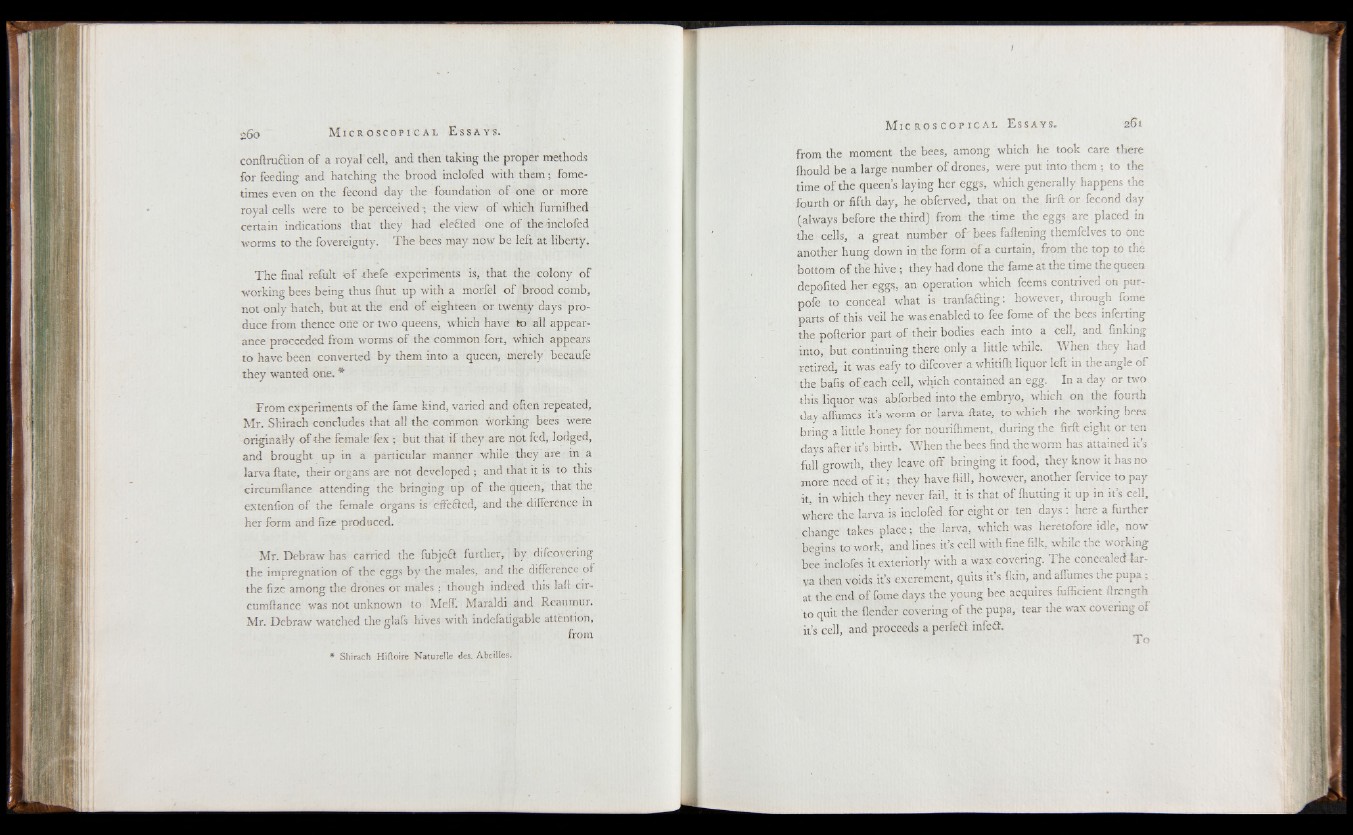
conftruftion o f a royal cell, and then taking the proper methods
for feeding and hatching the brood inclofed with them; fome-
times even on the fecond day the foundation of one or more
royal cells were to be perceived •; the view o f which fumilhed
certain indications that they had elected one o f the inclofed
worms to the fovereignty. The bees may now be left at liberty.
The final refult o f thefe experiments is, that the colony o f
working bees being thus Ihut up with a morfel o f brood comb,
not only hatch, but at the end o f eighteen or twenty days produce
from thence one or two queens, which have to all appearance
proceeded from worms o f the common fort, which appears
to have been converted by them into a queen, merely becaufe
they wanted one. *
From experiments o f the fame kind, varied and often repeated,
Mr. Sbirach concludes that all the common working bees were
originally o f the female fex ; but that if they are not fed, lodged,
and brought up in a particular manner while they are in a
larva ftate, their organs are not developed ; and that it is to this
circumftance attending the bringing up of the queen, that the
extenfion o f the female organs is effefsled, and the difference in
her form and fize produced.
Mr. Debraw has carried the fubjeft further, by difcovering
the impregnation of the eggs by the males, and the difference of
the fize among the drones or males ; though indeed this laft circumftance
was not unknown to Meff. Maraldi and Reaumur.
Mr. Debraw watched the glafs hives with indefatigable attention,
from
* Shirach Hiftoire Naturelle des. Abeilles.
from the moment the bees, among which he took care there
fhould be a large number of drones, were put into them ; to the
time o f the queen’s laying her eggs, which generally happens the
fourth or fifth day, he obferved, that on the firft or fecond day
(always before the third) from the time the eggs are placed in
the cells, a great number o f ' bees fattening themfelves to one
another hung down in the form o f a curtain, from the top to the
bottom o f the hive ; they had done the fame at the time the queen
depofited her eggs, an operation which feems contrived on pur-
pofe to conceal what is tranfaaing: however, through fome
parts of this veil he was enabled to fee fome o f the bees inferring
the pofterior part o f their bodies each into a cell, and finking
into, but continuing there only a little while. When they had
retired, it was eafy to difcover a whitifh liquor left in the angle o f
the bafis o f each cell, which contained an egg. In a day or two
this liquor was abforbed into the embryo, which on the fourth
day afl'umes it’s worm or larva ftate, to which the working bees
bring a little honey for nourifhment,^ during the firft eight or ten
days after it’s birth. When the bees find the worm has attained it’s
full growth, they leave off bringing it food, they know it has no
more need of i t ; they have ftill, however, another fervice to pay
it, in which they never fail, it is that o f {hutting it up in it’s cell,
where the larva is inclofed for eight or ten days : here a further
change takes place; the larva, which was heretofore idle, now
begins to work, and lines it’s cell with fine filk, while the working
bee inclofes it exteriorly with a wax covering. The concealed larva
then voids it’s excrement, quits it’s flrin, and afiiimes the pupa ;
at the end o f fome days the young bee acquires fufficient ftrength
to quit the {lender covering of the pupa, tear the wax covering of
it’s cell, and proceeds a perfeft infeS.
T o